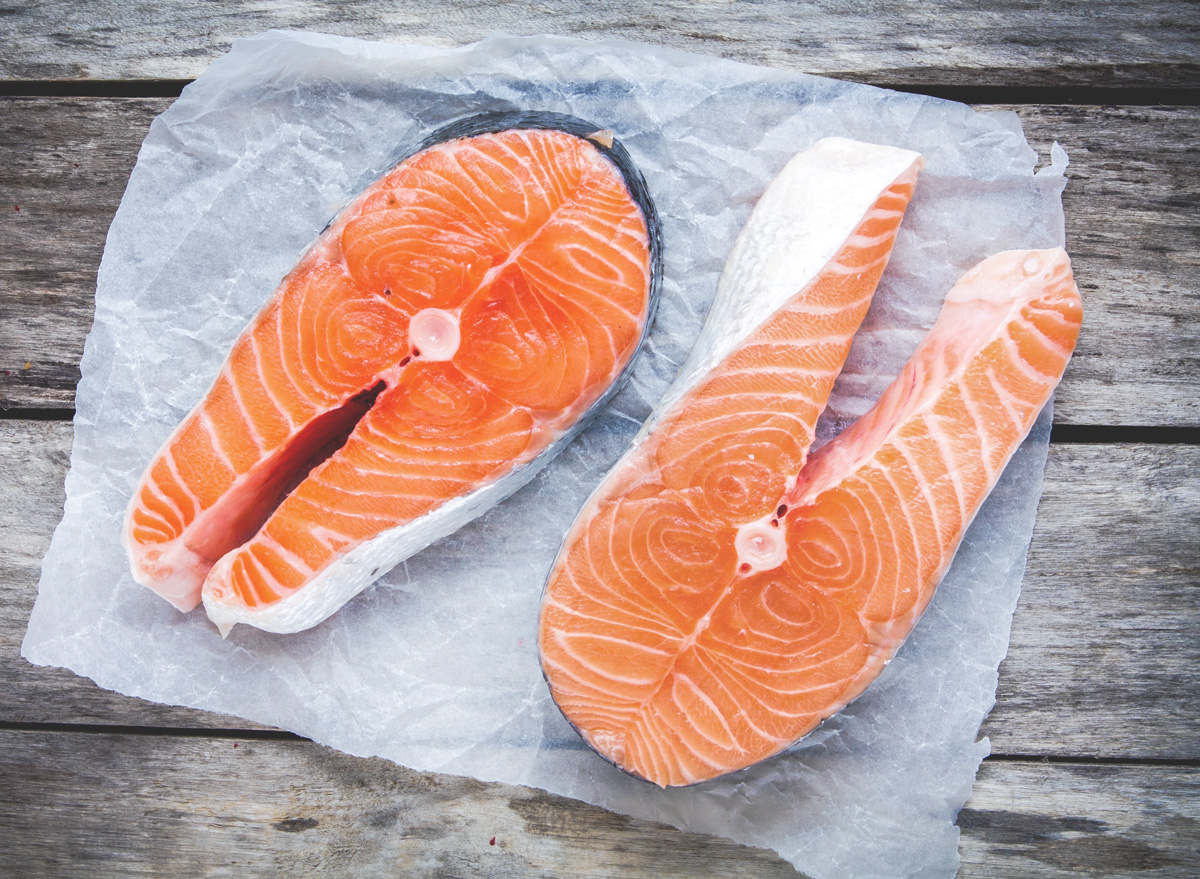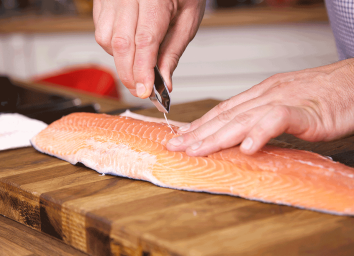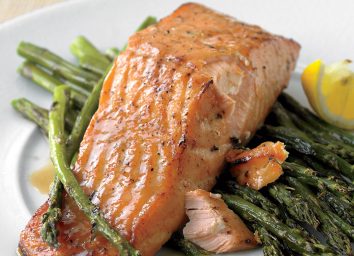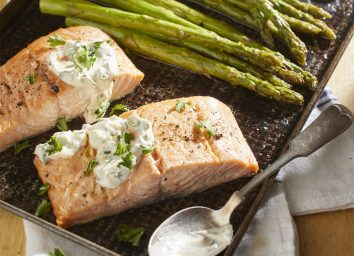The Difference Between Farm-Raised and Wild-Caught Salmon

Fans of salmon know just how versatile the fish is. Whether you enjoy it best smoked and on a bagel, or broiled with some light seasoning, salmon can spruce up a variety of dishes. In recent years though, the discussion between wild-caught vs. farm-raised has piqued many people's interest, as the latter has become more prevalent in grocery stores.
There has been a lot of misinformation thrown around about the two (with the burden mostly falling on farmed); so, in an attempt to get a more concise answer on the farm-raised vs. wild-caught salmon debate, we did some research and consulted Jeremy Woodrow, the executive director of Alaska Seafood Marketing Institute, to lend more insight on what types of salmon are wild-caught.
What are the key differences between farm-raised and wild-caught salmon?
Location: Salmon that is farm-raised is typically sourced from the Atlantic Ocean and then are hatched, raised, and harvested in a controlled environment. Wild-caught salmon, on the other hand, is harvested from the Pacific Ocean primarily during the summer months. As a result, farmed salmon is available fresh throughout the year. It's also oftentimes cheaper than wild salmon, as wild salmon can typically only be bought fresh from June through September, unless frozen.
Flavor: Because the habitat of each type of salmon differs, the flavor of each is notably distinguishable, too. Wild-caught salmon lends a more robust salmon flavor and is often a firmer, less fatty fish. Farm-raised salmon is higher in fat, which is immediately noticeable with these visible striations of fat in the filet. It's this fat that allows it to fall apart more easily as you sink your fork into it, and offers a more mild fish flavor.
Diet: Wild vs. farmed salmon have different food sources. Most notably, farmers feed their salmon chum that contains corn, grains, and a compound called astaxanthin, which is what turns the flesh orange. Wild salmon naturally has a rich pink color because their diet is made up of crustaceans, algae, and other sources that are rich in carotenoids (the red pigment from plants). Farmers try to mimic that with the astaxanthin, which turns the fish's flesh a light orange. While there are currently studies being done to determine any long-term effects of synthetic astaxanthin on our health, it is currently deemed safe to eat by the USDA.
Species: Fun fact! The wild-caught vs. farm-raised debate isn't limited to just one species of fish! Woodrow says there are five different species of fresh salmon that are harvested in Alaska (where 90 and 95 percent of all wild salmon harvest in the U.S. comes from).
- Sockeye—Also known as red salmon, Alaska sockeye is one of the most popular salmon species due to its deep red color and rich salmon flavor.
Available: Fresh from mid-May through mid-September and frozen year-round. - King—Championed for its size and succulent flavor, king salmon, also known as chinook, and is the largest of the five Alaska salmon species. It also bears the highest fat content.
Available: Mostly caught in the summer, but some are harvested year-round. - Coho—Also known as silver salmon, Alaska coho lends itself to a host of preparation styles. Coho salmon is the second largest Alaska salmon species and is known for its orange-red flesh, delicate flavor, and firm texture.
Available: Mid-June through late October and frozen year-round. - Pink—True to its name, Alaska pink salmon has rosy pink-colored flesh. The most abundant and affordable of the five Alaska salmon species, pink salmon is known for its delicate flavor and tender texture. This species is often available canned but is also great for smoking.
Available: June through September and frozen year-round. - Keta—Keta, also known as silverbrite or chum, features a mild flavor and tempting pink color. This extremely versatile species is good for smoking, and due to its firm texture, it is a great choice for grilling or roasting.
Available: June through September and frozen year-round.
Is wild-caught salmon healthier for you than farm-raised?
Before we share any conclusions, let's review the nutrition information. Farmed salmon contains 412 calories per half filet, while the same size of wild-caught salmon contains just 281 calories, according to nutrition information from the USDA. That means farmed salmon contains 38% more calories than wild.
As for fat, farmed salmon contains 52 percent more fat than wild salmon (26.6 grams vs. 12.6 grams). And the composition of that fat is also different. Farmed salmon actually contains more anti-inflammatory omega-3 fatty acids than wild salmon (5 vs. 3.4 grams). But it comes with a catch. Wild salmon contains almost half the amount of pro-inflammatory omega-6 fatty acids of farmed (1.6 vs. 2.7 grams).
Having a higher omega-6 concentration may not sound good—especially considering that we may be consuming more than 20 times the amount of omega-6 fatty acids than we should—but it's not the end of the world. Fish is one of the few food sources of omega-3 fatty acids, so you're better off consuming any type of fish—wild or farmed— to reap those fatty acid benefits. If you're really concerned about lowering your intake of omega-6s, you should aim to cut back on the top sources of omega-6 fatty acids in the American diet: soybean and corn oil (common ingredients in processed foods).
As far as which one is healthier, research is muddied. Some make the argument that the feed given to farm-raised salmon is high in fat and protein, making farmed salmon higher in calories, fat, and protein as well. Recent studies suggest that the antibiotics used among groups of farm-raised fish to prevent disease could be linked to antibiotic resistance genes and may ultimately make their way into ocean-borne bacteria that threatens human health directly.
However, there doesn't appear to be enough consistent (and current) research that concludes farm-raised salmon is an unhealthy or less sustainable option. The key is to do your research on who you are purchasing salmon from, no matter if it's wild or farmed.
Salmon is chock-full of anti-inflammatory omega-3 fatty acids and vitamin D, both of which Americans tend to not get enough of. Whether you choose to buy wild-caught or farm-raised, the focus should be more on flavor and texture rather than trying to decide based on health reasons.








